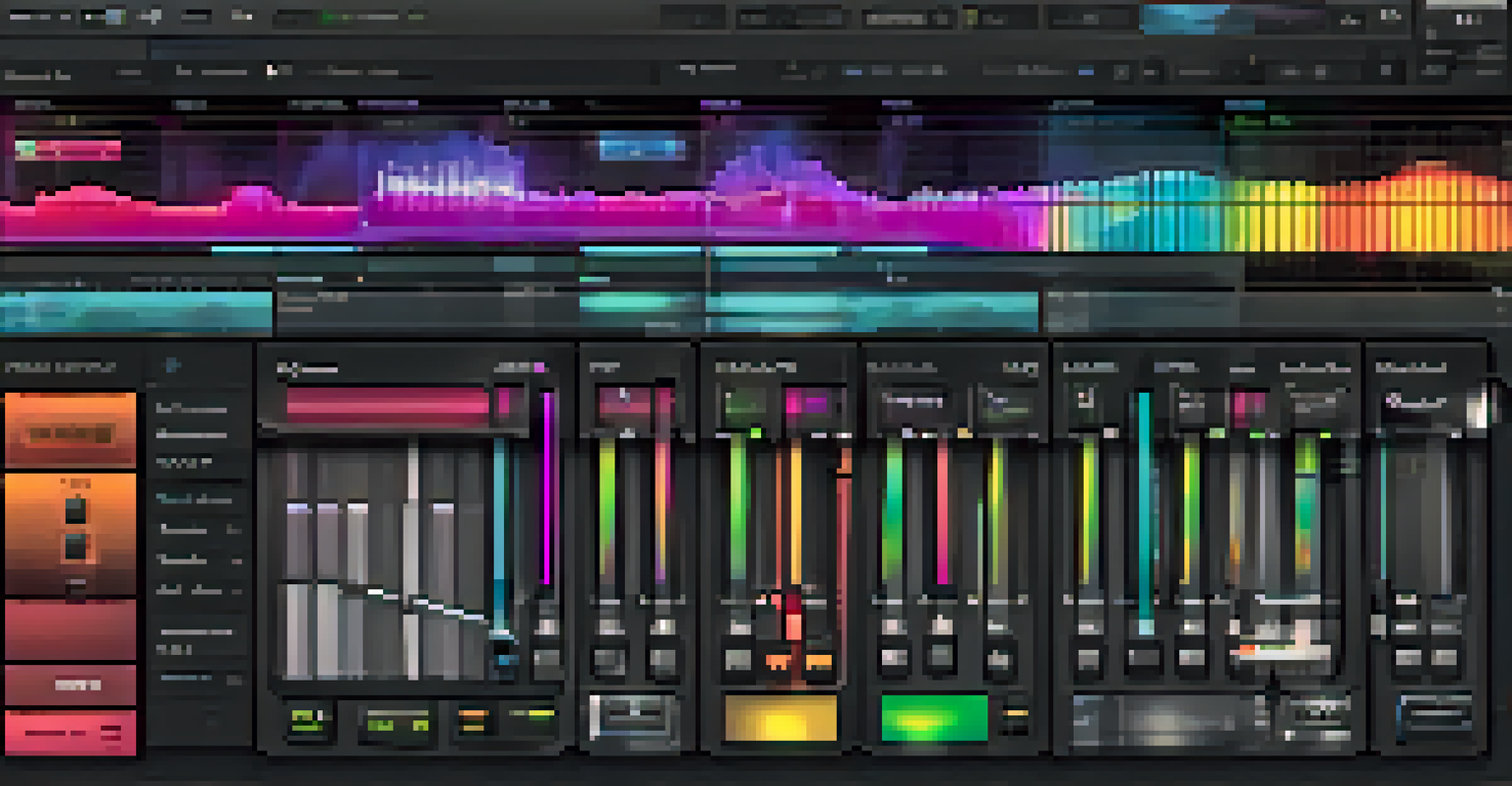The Global Music Economy: Trends and Implications

Understanding the Global Music Economy Landscape
The global music economy encompasses a vast array of activities, from streaming services to live performances. As technology continues to evolve, the way we consume music has transformed dramatically, impacting artists and consumers alike. Today, the music industry is not just about selling albums; it’s about creating experiences and engaging audiences across multiple platforms.
Music can change the world because it can change people.
In recent years, the rise of digital platforms has shifted the focus from physical sales to streaming revenues. According to recent reports, streaming accounts for a significant portion of global music revenue, highlighting a major trend in how music is consumed. This shift has opened up new opportunities for artists, allowing them to reach audiences worldwide without the barriers of traditional distribution methods.
However, this new landscape also presents challenges, such as the need for artists to adapt their marketing strategies. With so many platforms available, standing out in a crowded market requires creativity and innovation. As we delve deeper into the global music economy, understanding these trends and their implications is crucial for both artists and industry stakeholders.
The Impact of Streaming Services on Artists
Streaming services like Spotify and Apple Music have revolutionized how artists distribute their music. While these platforms provide unparalleled access to a global audience, they also raise questions about fair compensation for artists. Many musicians find themselves grappling with the reality that streaming royalties often do not reflect the true value of their work.

For instance, an artist might achieve millions of streams but still earn relatively little. This discrepancy highlights the importance of understanding the economics of streaming, which can be quite complex. As artists navigate this new terrain, some are finding innovative ways to monetize their music, such as through merchandise sales and live performances.
Streaming Redefines Music Revenue
The shift from physical sales to streaming services has transformed how artists generate income, highlighting the need for fair compensation.
This evolution emphasizes the need for transparency in the music industry. As artists demand fairer compensation, it’s essential for streaming services to reconsider their business models to support the creatives behind the music. The ongoing dialogue around these issues will shape the future landscape of the global music economy.
Live Music and Concerts: A Resurgence
The live music sector has experienced a remarkable resurgence following the pandemic, as audiences return to concerts and festivals in droves. This revival not only boosts local economies but also provides artists with essential revenue streams. For many musicians, live performances are a vital component of their income, often surpassing earnings from recordings.
The future of music is not just about technology, it's about the connection between people.
The experience of attending a concert is irreplaceable, fostering a sense of community and connection that digital platforms can't replicate. With this in mind, many artists are investing in their live shows to create memorable experiences for fans. From elaborate stage designs to unique setlists, the emphasis on live performance is stronger than ever.
Moreover, the integration of technology in live music—such as virtual reality experiences—offers exciting possibilities for the future. As we look ahead, the live music industry will likely continue to innovate, blending traditional concert experiences with new technologies to engage audiences in fresh ways.
The Role of Social Media in Music Promotion
Social media has become an indispensable tool for musicians to promote their work and connect with fans. Platforms like Instagram, TikTok, and Twitter allow artists to share their music, behind-the-scenes content, and personal stories, creating a more intimate relationship with their audience. This direct engagement can significantly boost an artist's visibility and fanbase.
For example, many emerging artists have gained notoriety through viral challenges or trends on TikTok, showcasing the power of social media in music promotion. These platforms enable artists to reach demographics that traditional media might overlook, especially younger audiences. In this way, social media acts as a democratizing force in the music industry.
Live Music Thrives Post-Pandemic
The resurgence of live music events offers artists essential revenue streams and fosters community engagement among fans.
However, with the benefits come challenges, as artists need to consistently create engaging content to maintain their audience's interest. Balancing the demands of social media with the creative process can be taxing, but those who navigate it well often find significant rewards. Thus, leveraging social media effectively has become a crucial aspect of an artist's success in the current music economy.
Diversity and Inclusion in the Music Industry
The global music economy is becoming increasingly aware of the importance of diversity and inclusion. Historically, many segments of the industry have been dominated by a narrow set of voices, but there's a growing push for representation across genres and backgrounds. This shift not only enriches the music landscape but also resonates with a broader audience.
Artists from diverse backgrounds are gaining recognition and breaking through barriers, bringing unique perspectives and sounds to mainstream music. For instance, genres like K-pop and Afrobeat have exploded in popularity, showcasing talents from around the world. These movements emphasize the idea that music knows no borders, fostering a global community.
As the industry continues to evolve, companies are recognizing the need for diverse representation in decision-making roles. Embracing diversity can lead to more innovative ideas and a more vibrant music scene. The ongoing conversations around inclusivity will undoubtedly shape the future of the music economy, making it more reflective of the world we live in.
The Influence of Technology on Music Creation
Technology has dramatically transformed the way music is created, offering artists new tools and platforms to express their creativity. From digital audio workstations (DAWs) to synthesizers and AI-generated music, technology allows for unprecedented experimentation and innovation. This evolution democratizes music production, enabling anyone with a computer to create and share their work.
For example, many independent artists now produce high-quality music from their home studios, bypassing the need for expensive recording sessions. This accessibility has led to a surge in diverse music styles and genres, as artists explore new sounds and techniques. The result is a rich tapestry of music that reflects the varied experiences and cultures of creators around the globe.
Diversity Shapes Music's Future
Increasing diversity and inclusion in the music industry enriches the landscape and resonates with a broader audience.
However, the rapid pace of technological advancement also presents challenges. Artists must continually adapt to new tools and trends to remain relevant in an ever-changing landscape. Balancing creativity with the technical aspects of music production can be daunting, but those who embrace these changes often find exciting new avenues for their artistry.
Future Trends in the Global Music Economy
As we look to the future, several trends are poised to shape the global music economy. One significant trend is the increasing importance of data analytics in understanding listener preferences and behaviors. By harnessing data, artists and labels can make informed decisions about marketing strategies and touring plans, ultimately enhancing their chances of success.
Additionally, the rise of blockchain technology and NFTs (non-fungible tokens) is likely to redefine how artists monetize their work. These innovations offer new ways for musicians to sell their art directly to fans, creating a more sustainable financial model. As the industry embraces these developments, we may see a shift toward more equitable revenue distribution.

Moreover, the collaboration between artists from different genres and backgrounds is expected to continue growing, leading to exciting and unique musical fusions. This trend not only enriches the listening experience but also fosters a sense of community among artists and fans alike. The future of the global music economy looks promising, with endless possibilities for creativity and connection.